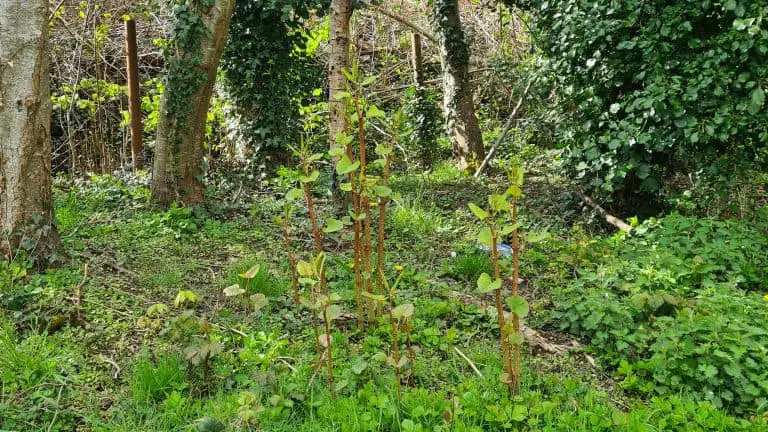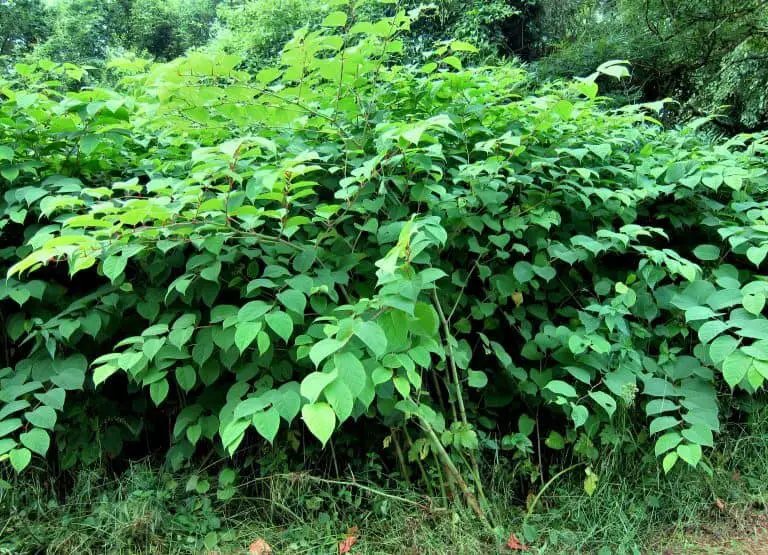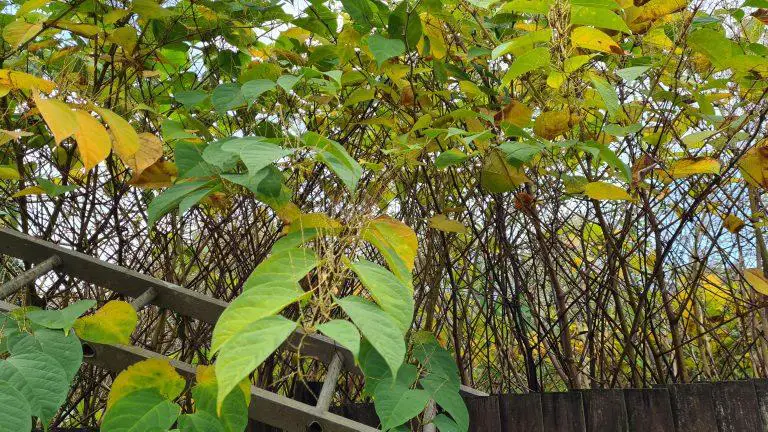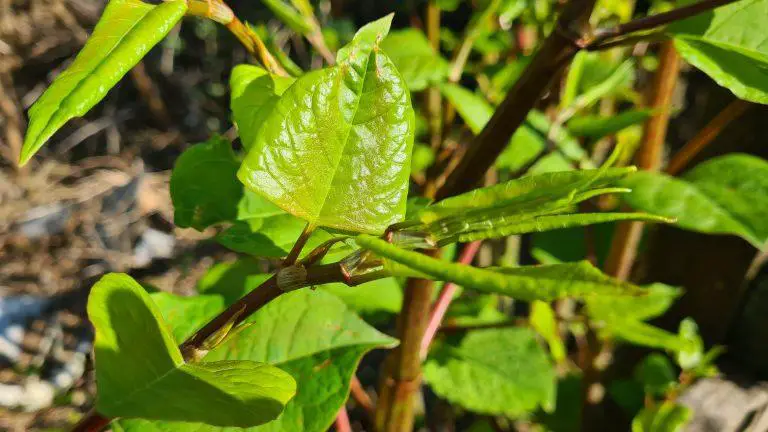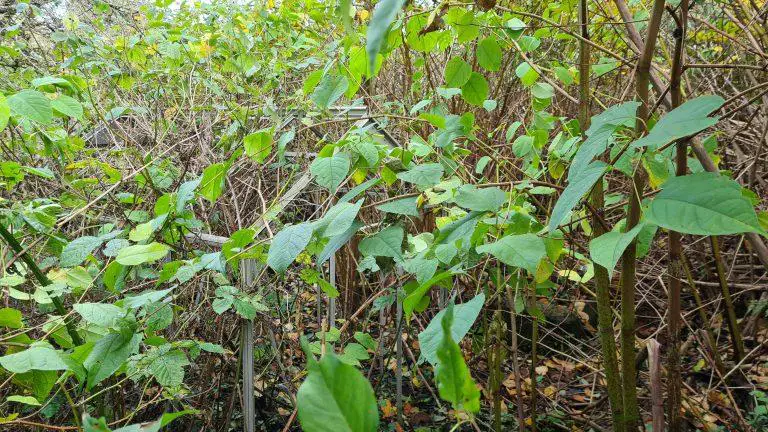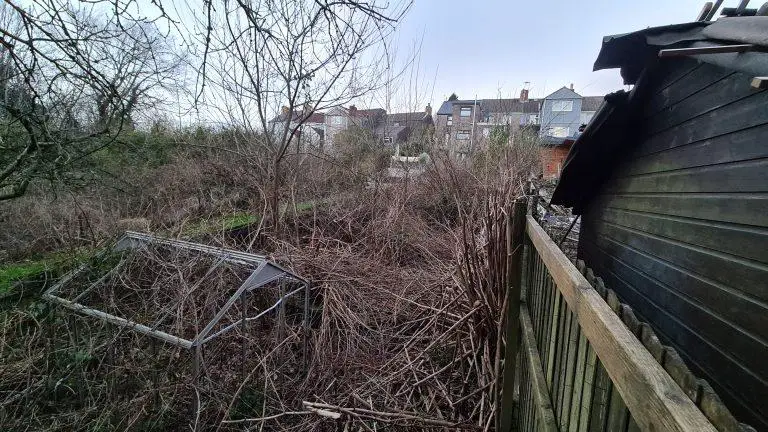Japanese Knotweed is an invasive plant species that can cause significant damage to homes, gardens, and other structures.
If left unchecked, it can quickly spread and cause havoc. It’s important to take action to stop the spread of Japanese Knotweed before it’s too late.
In this blog post, we will discuss how to stop Japanese Knotweed from spreading and why it’s crucial to take action.
According to the UK government, Japanese Knotweed costs the economy an estimated £166 million ($230 million) per year to control and treat.
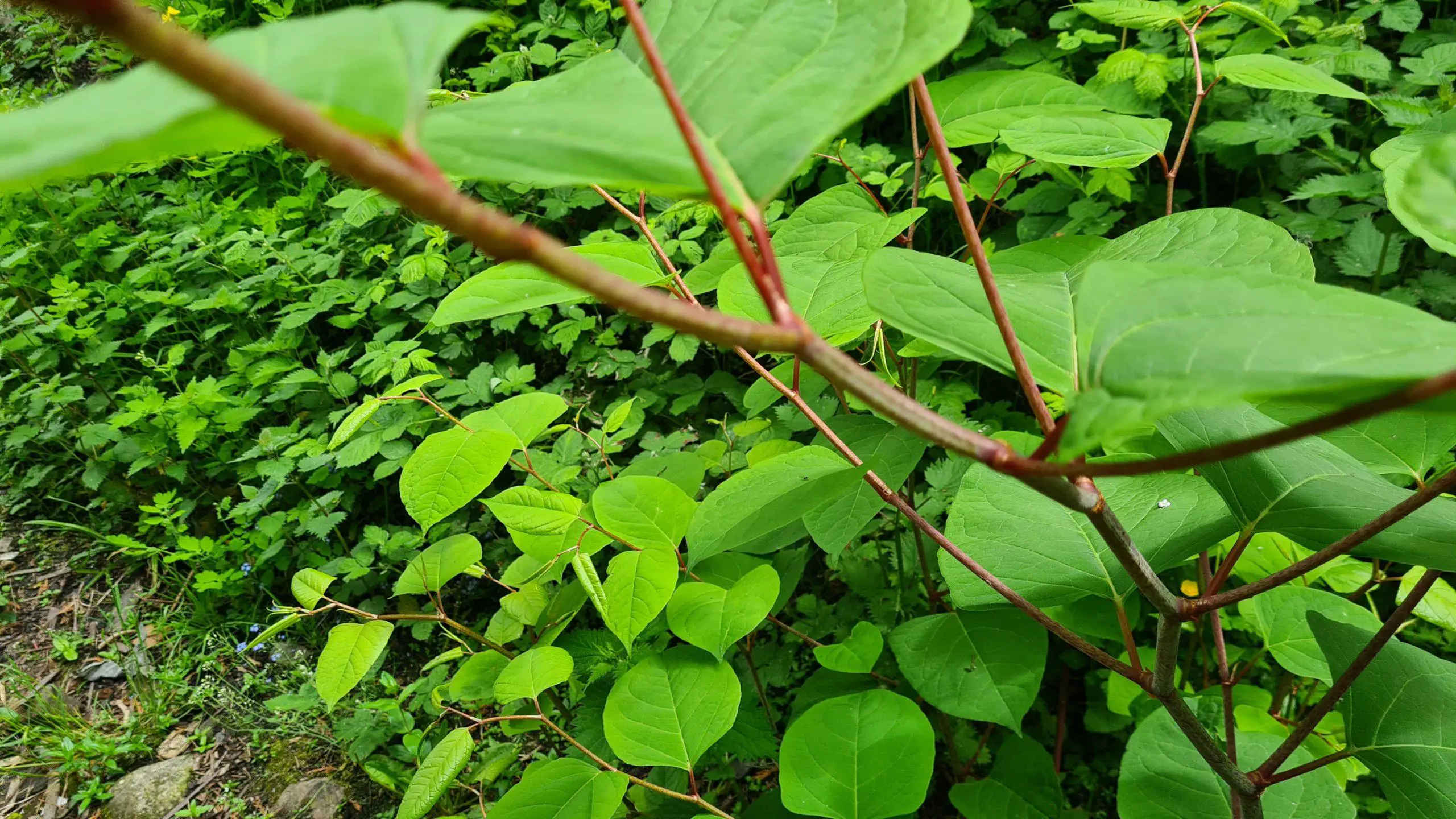
Understanding How Japanese Knotweed Spreads
Japanese knotweed is a highly invasive plant species that can quickly take over an area and cause extensive damage to the environment. It’s native to East Asia but has spread all around the world, making it one of the most pervasive plants on Earth.
While Japanese knotweed may look harmless at first glance, understanding how it spreads is crucial for controlling its growth and preventing further destruction of ecosystems. This article will explain what you need to know about Japanese knotweed and how it spreads.
Japanese knotweed is a perennial plant that spreads mainly through its rhizomes, which are underground stems. These rhizomes can grow as deep as 3 meters and up to 7 meters wide, making it difficult for humans to contain the growth of this plant manually. It reproduces by producing seeds or by sprouting new plants from broken pieces of rhizomes.
The most common way Japanese knotweed spreads is through human activities, such as the transportation of soil or plant material from one area to another. This can happen when people don’t realize that the soil contains Japanese knotweed and dump it elsewhere, allowing the plant to spread further. It can also occur when builders, landscapers, or other workers transport soil that’s contaminated with Japanese knotweed to new sites.
Japanese knotweed can also spread through the water. Its seeds and rhizomes can travel along waterways, contaminating areas far away from the original site of growth. This is especially common in areas with poor drainage systems and where water runs unchecked.
Finally, Japanese knotweed can spread through the wind. Its seeds can float long distances, making it easy to contaminate distant areas with this plant species.
By understanding how Japanese knotweed spreads and taking steps to control its growth, you can help keep this invasive species from spreading further and causing damage to the environment. Be sure to follow local guidelines for controlling and disposing of Japanese knotweed and seek professional help if needed. Taking these steps can go a long way in preventing the spread of this plant species.
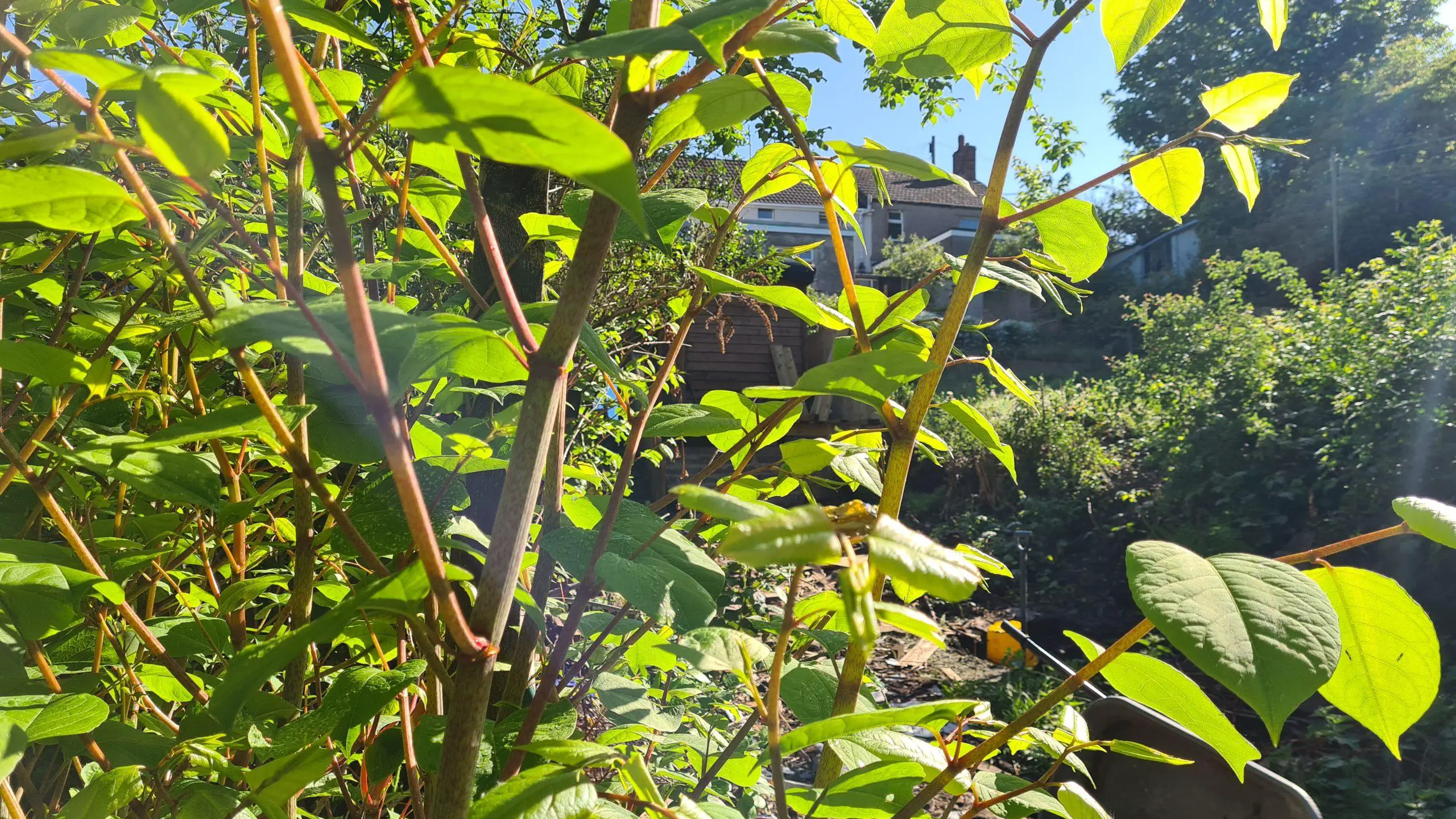
Why It’s Important to Stop Japanese Knotweed from Spreading
Japanese Knotweed is an invasive species that has been spreading rapidly throughout the United States. It is a hardy, fast-growing plant with deep roots and can quickly take over an area if allowed to go unchecked. This makes it difficult to control once established and can cause significant damage to both natural habitats and human infrastructure.
As such, it is important to stop Japanese knotweed from spreading in order to protect our environment as well as prevent costly repairs due to its aggressive growth. With proper identification of this plant, early detection, prevention strategies, and treatments available for controlling existing populations, we can help limit the spread of this troublesome weed.
Controlling Japanese knotweed requires an integrated approach that involves physical removal, chemical control, and biological control.
- Physical removal is the most effective way to get rid of this weed, but it can be difficult due to its deep roots and hardiness.
- Chemical control can also be used as a viable option; however, care must be taken not to damage surrounding vegetation and the environment.
- Biological control, such as introducing natural predators or competitors to the plant, is also an effective way of controlling Japanese knotweed populations.
Tips for Preventing the Spread of Japanese Knotweed
Japanese Knotweed is an invasive plant that can cause extensive damage to properties and the environment. It’s important to take precautions to prevent it from spreading as once it takes hold, it can be difficult and costly to eradicate. Here are some tips for preventing the spread of this aggressive weed.
1. Monitor the area: Look for signs of Japanese Knotweed, such as heart-shaped leaves and bamboo-like stems, on a regular basis to identify and tackle any new outbreaks quickly.
2. Contain the weed: If you have identified an outbreak, take steps to contain it by digging a trench around the affected area to prevent it from spreading further.
3. Dispose of plant material properly: Never leave cuttings or clippings on the ground, as these can contain viable pieces of the plant that will grow if left unchecked. Instead, place them in sealed plastic bags and dispose of them in a skip or take them to a designated landfill site.
4. Avoid digging or disturbing the soil: Japanese Knotweed has an extensive network of roots, often referred to as rhizomes, that can spread far beyond the visible part of the plant. For this reason, avoid any activities that could spread these roots such as digging and tilling.
5. Use a herbicide: Herbicides are an effective way to control Japanese Knotweed, but they should only be used by professionals. If you believe herbicide is the best course of action, contact a qualified pest controller who can safely and responsibly apply it.
6. Educate your neighbours: Make sure that everyone in your community is aware of the dangers posed by Japanese Knotweed. By spreading the word, you can help to prevent the spread of this harmful weed.
7. Carefully choose landscaping materials: If your property is prone to Japanese Knotweed outbreaks, avoid buying topsoil or compost that could contain fragments of the plant. Instead, opt for horticultural-grade material that has been rigorously tested for weed seeds and other contaminants.
By taking the necessary steps to prevent Japanese Knotweed from spreading, you can help protect your property, the environment, and surrounding areas.
If an outbreak does occur on your property, contact a qualified pest controller immediately to safely manage it. With vigilance and action, we can all help to prevent the spread of this dangerous weed.
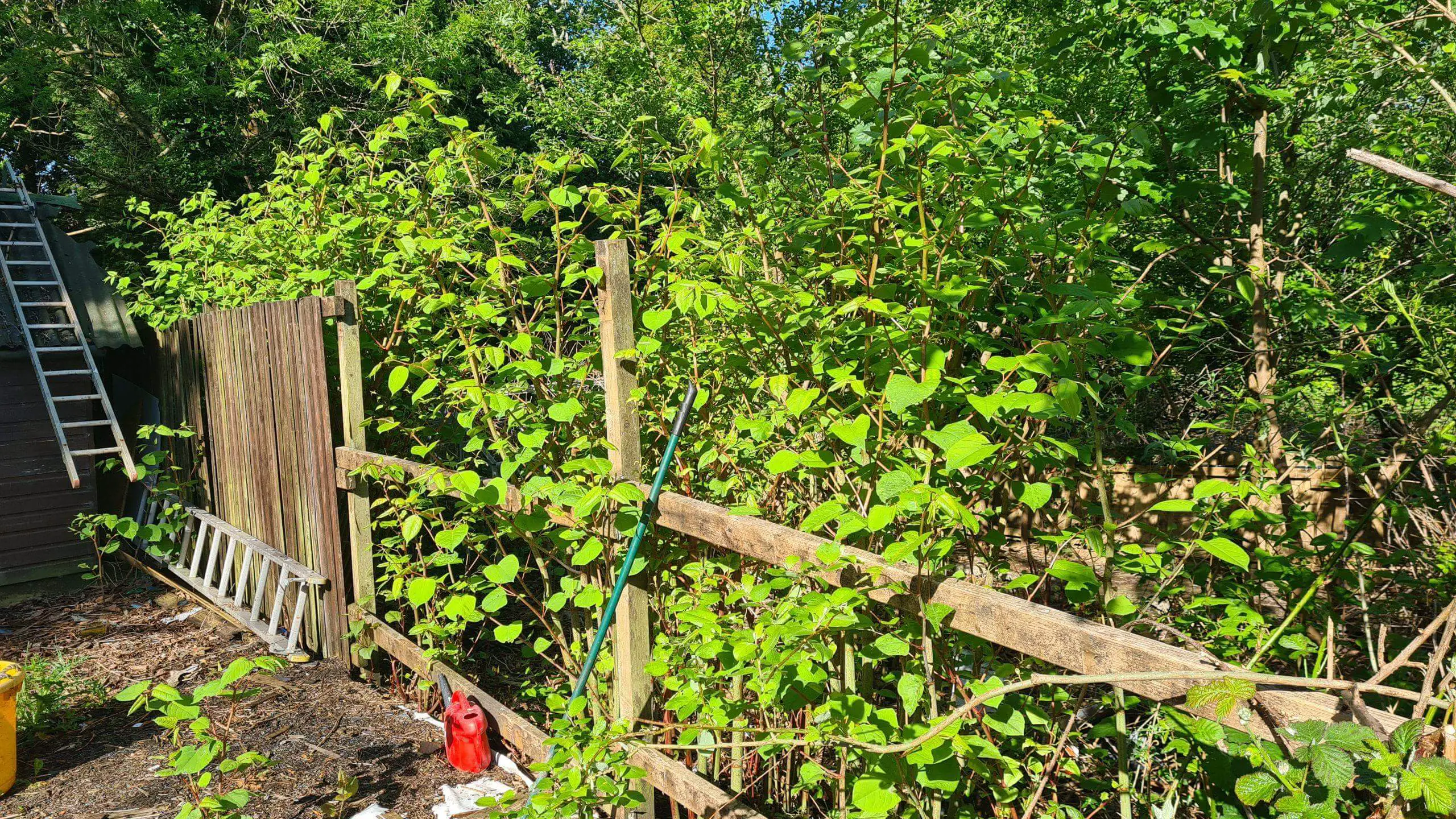
What to Do If Japanese Knotweed Is Already Present on Your Property
Japanese Knotweed is an invasive species of plant that can cause significant damage to property, and it needs to be dealt with as soon as possible. It’s important to understand the right steps for treating Japanese knotweed if it’s already present on your property.
Taking swift action will help you minimize the spread of this incredibly resilient weed, while also protecting your home from potential structural damage caused by its aggressive roots. With the proper treatment plan in place, you can get rid of Japanese knotweed and keep it away for good.
The first step in treating Japanese knotweed is to contact a professional. A qualified contractor can assess the situation on your property and recommend the best course of action for eliminating it. This may include physical removal, chemical herbicides, or a combination of both. It’s important to note that any herbicide used must be applied according to the product’s label directions in order to be effective.
It’s also important to understand that there is no one-size-fits-all treatment for Japanese knotweed. Different areas may require different strategies for removal, and it’s essential that you follow the recommendations of your contractor. If you attempt to treat the plant yourself, you may make the problem worse by spreading its roots further.
Finally, it’s important to take steps to prevent the regrowth of Japanese knotweed. This includes regularly monitoring your property for signs of growth and ensuring that you keep the area free from debris that could provide a hospitable environment for the weed’s regrowth.
Additionally, if you plan to construct any buildings on your property, make sure that they’re built far away from any existing Japanese knotweed so as not to inadvertently spread its roots further.
By following these steps and working with a professional, you can effectively treat Japanese knotweed and protect your property from the damage it can cause. With the right plan in place, you can have peace of mind that your home or business is safe from this invasive species.
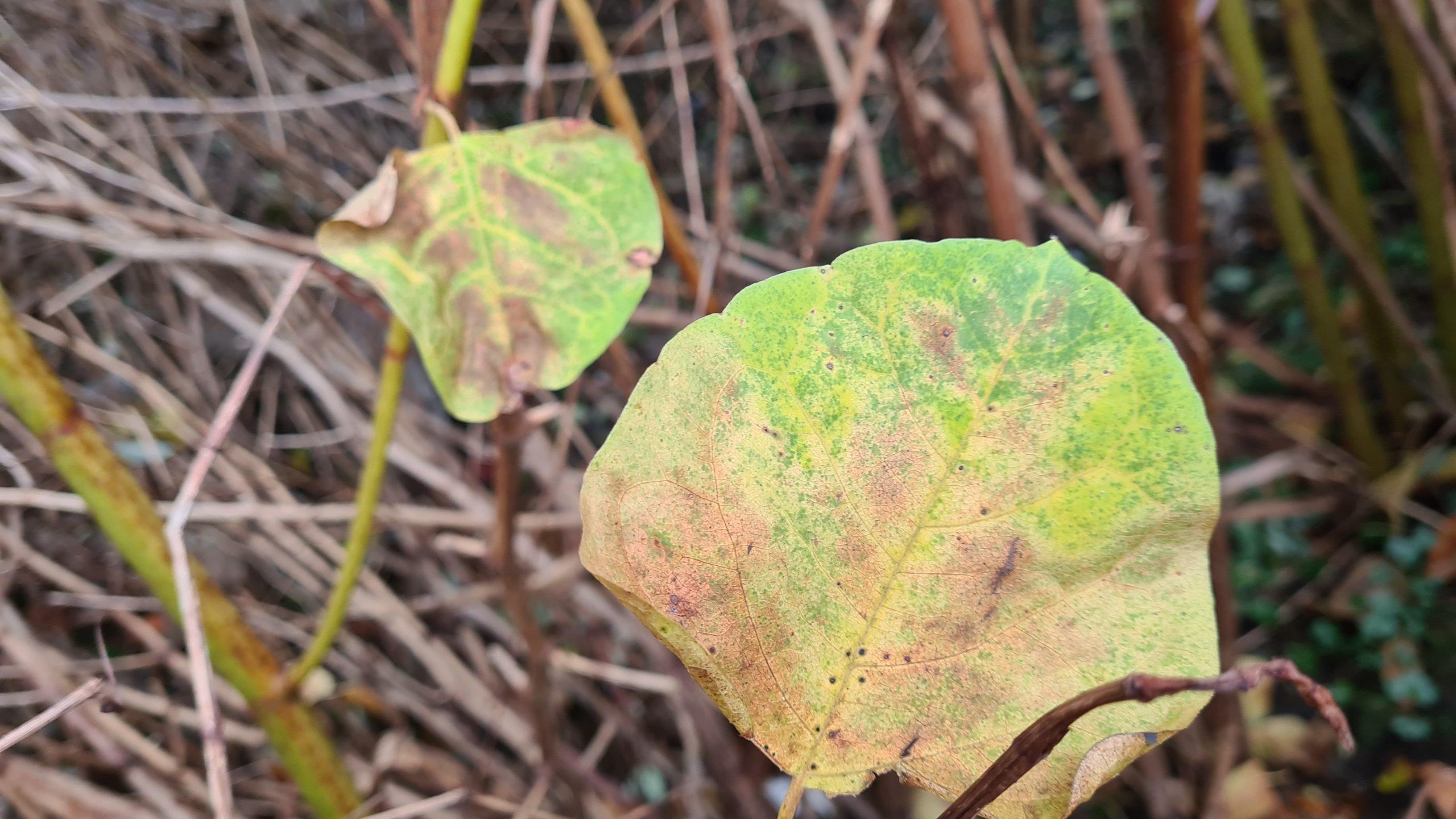
Final thoughts
Stopping the spread of Japanese Knotweed is crucial to protecting your property and the surrounding ecosystem. By understanding how Japanese Knotweed spreads and taking action to prevent its spread, you can help protect your property and prevent the devastating effects of this invasive species.
Remember, prevention is key to stopping the spread of Japanese Knotweed, so make sure to follow prevention tips and contact a professional if you suspect it’s present on your property.

